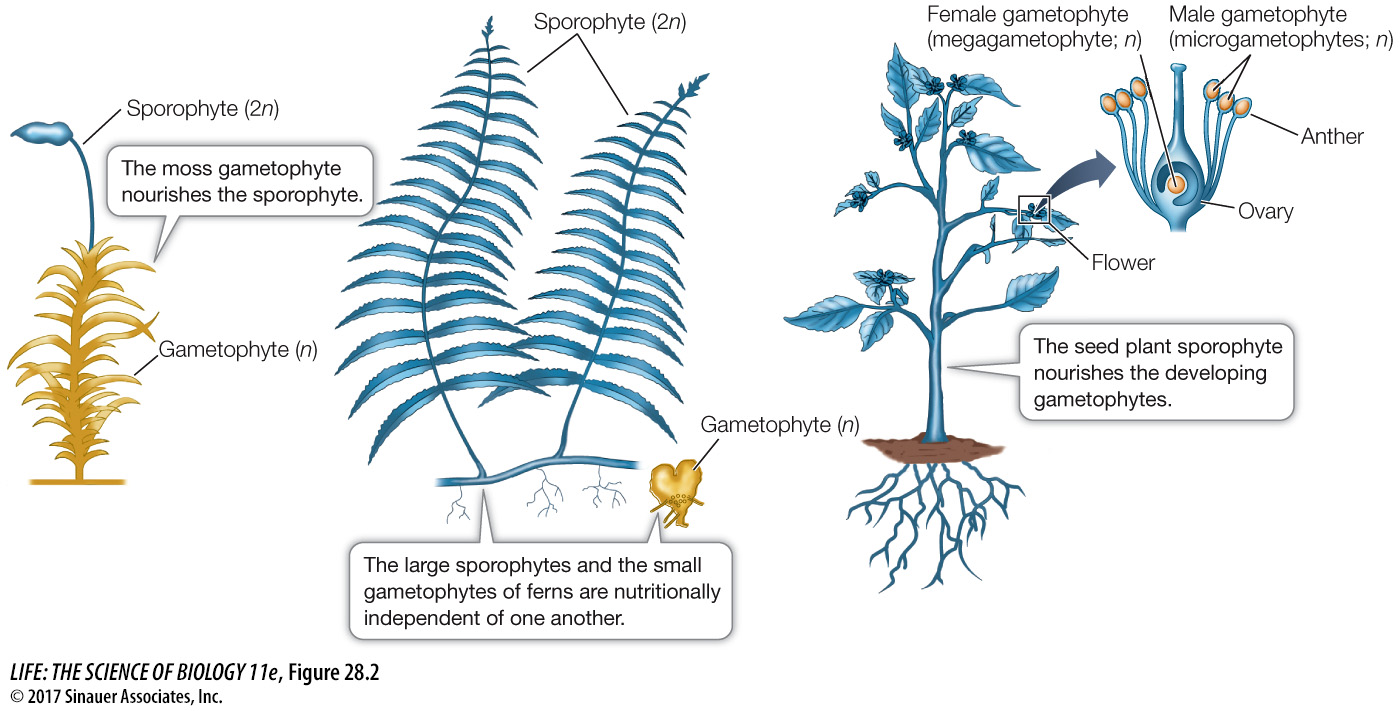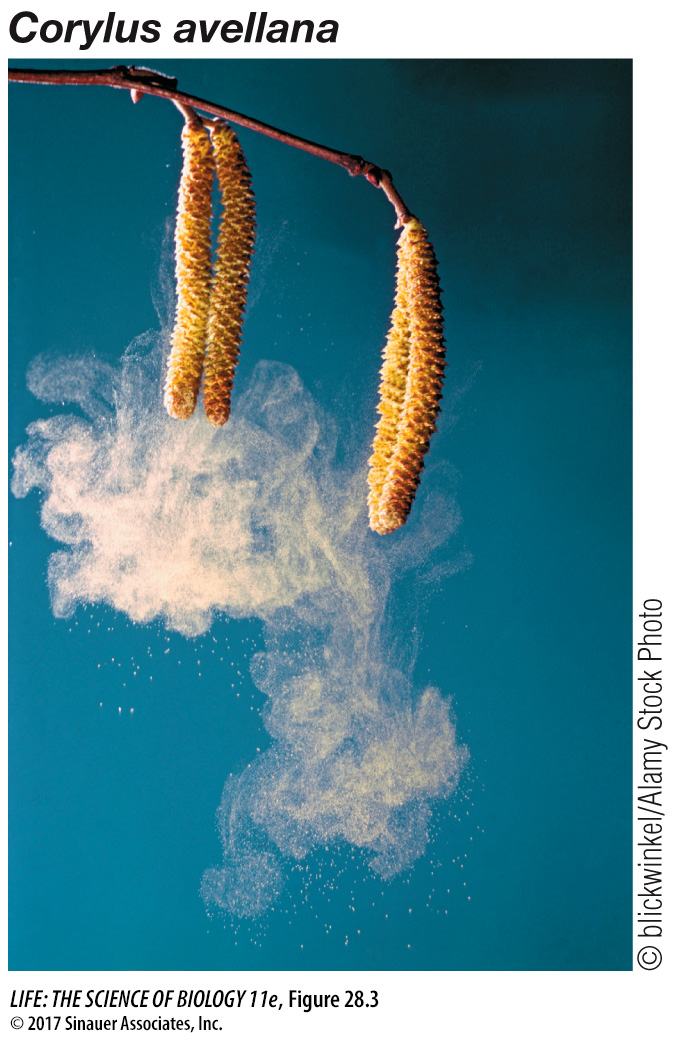Features of the seed plant life cycle protect gametes and embryos
In Key Concept 27.2 we described a major trend in land plant evolution: the sporophyte became less dependent on the gametophyte, which became smaller in relation to the sporophyte. This trend continued with the seed plants, whose gametophyte generation is reduced even further than that of the ferns (Figure 28.2). The haploid seed plant gametophyte develops partly or entirely while attached to and nutritionally dependent on the diploid sporophyte.

Question
Q: When you see a growing moss, are you more likely to see the haploid or the diploid multicellular stage? Is your answer the same for a fern and for a flowering plant?
The haploid gametophyte stage of the moss is the most prominent stage, and the stage we recognize most readily as a moss. The haploid stage of ferns, in contrast, is very inconspicuous, so we usually see the larger diploid sporophyte. In flowering plants, the haploid gametophytes are rarely seen, except as pollen.
Among the seed plants, only the earliest diverging groups of gymnosperms (including modern cycads and ginkgos) have swimming sperm. Even in these groups, sperm is transferred via pollen grains, so fertilization does not require liquid water outside the plant body. The evolution of pollen, along with the advent of seeds, gave seed plants the opportunity to colonize drier areas and spread over the terrestrial environment.
594
Seed plants are heterosporous (see Figure 27.18B)—that is, they produce two types of spores, one that becomes a microgametophyte (male gametophyte) and one that becomes a megagametophyte (female gametophyte). These plants form separate microsporangia and megasporangia on structures that are grouped on short stems, such as the stamens and pistils of an angiosperm flower.
Within the microsporangium, the meiotic products are microspores. Within its spore wall, a microspore divides mitotically one or a few times to form a multicellular male gametophyte called a pollen grain. Pollen grains are released from the microsporangium to be distributed by wind or by an animal pollinator (Figure 28.3). As in seedless land plants, the spore wall that surrounds the pollen grain contains sporopollenin, the most chemically resistant biological compound known, which protects the pollen grain against dehydration and chemical damage—

Media Clip 28.1 Pollen Transfer by Wind
www.life11e.com/
In contrast to the microspores, the megaspores of seed plants are not shed. Instead, they develop into female gametophytes within the megasporangia. These megagametophytes are dependent on the sporophyte for food and water.
In most seed plant species, only one of the meiotic products in a megasporangium survives. The surviving haploid nucleus divides mitotically, and the resulting cells divide again to produce a multicellular female gametophyte. The megasporangium is surrounded by sterile sporophytic structures, which form an integument that protects the megasporangium and its contents. Together, the megasporangium and integument constitute the ovule, which will develop into a seed after fertilization.
The arrival of a pollen grain at an appropriate landing point, close to a female gametophyte on a sporophyte of the same species, is called pollination. A pollen grain that reaches this point develops further. It produces a slender pollen tube that elongates and digests its way toward the megagametophyte (Figure 28.4). When the tip of the pollen tube reaches the megagametophyte, sperm are released from the tube and fertilization occurs.

Activity 28.1 Flower Morphology
www.life11e.com/
595
The resulting diploid zygote divides repeatedly, forming an embryonic sporophyte. After a period of embryonic development, growth is temporarily suspended (the embryo enters a dormant stage). The end product at this stage is the multicellular seed.